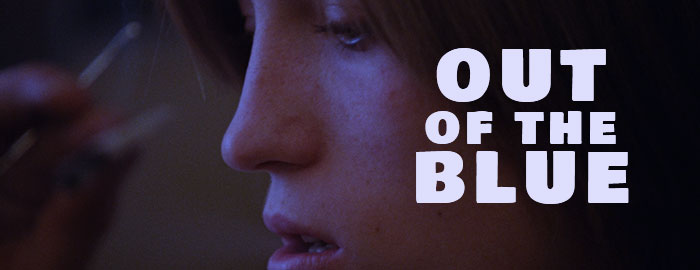

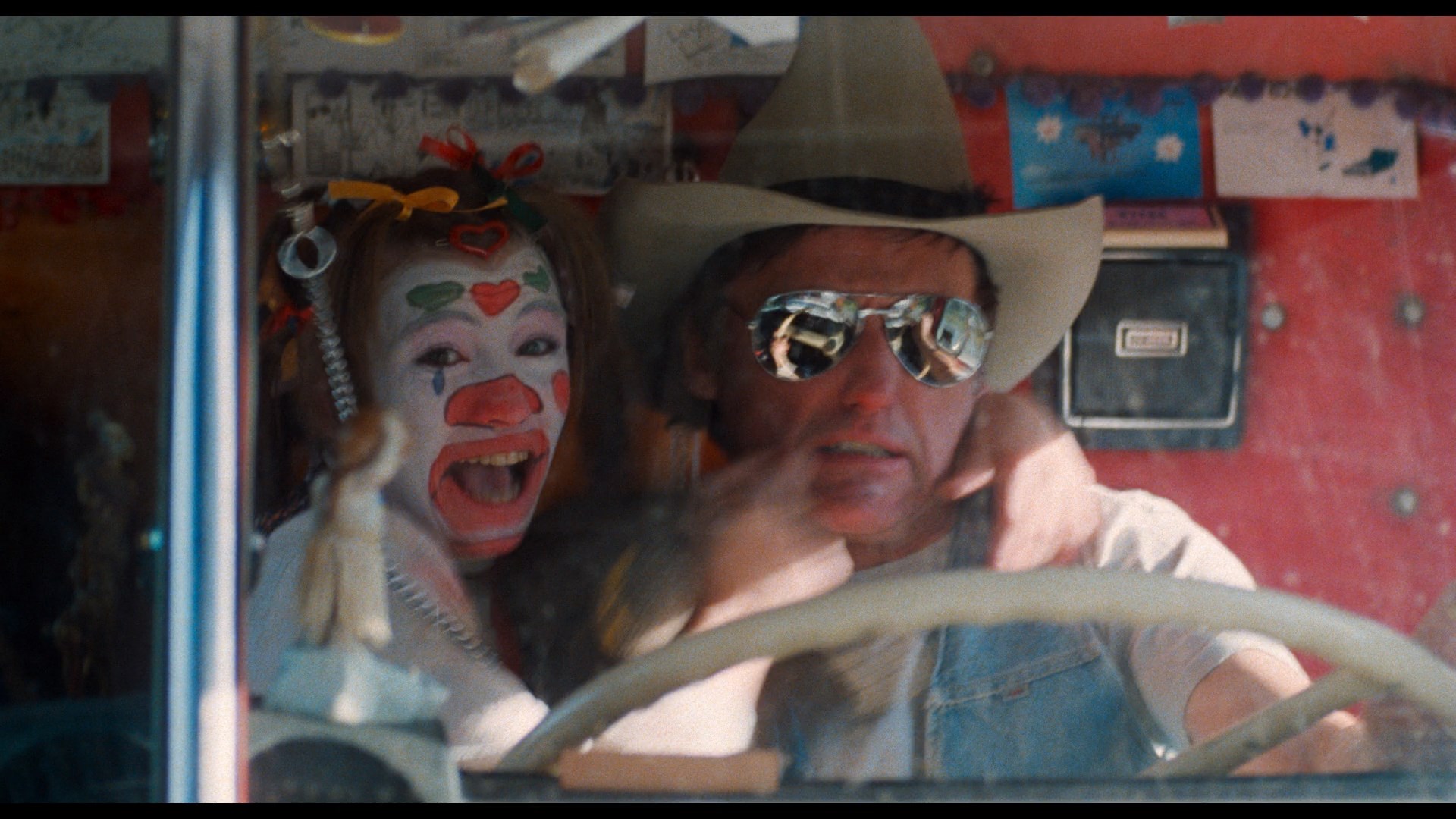 after setting his directorial career
after setting his directorial career 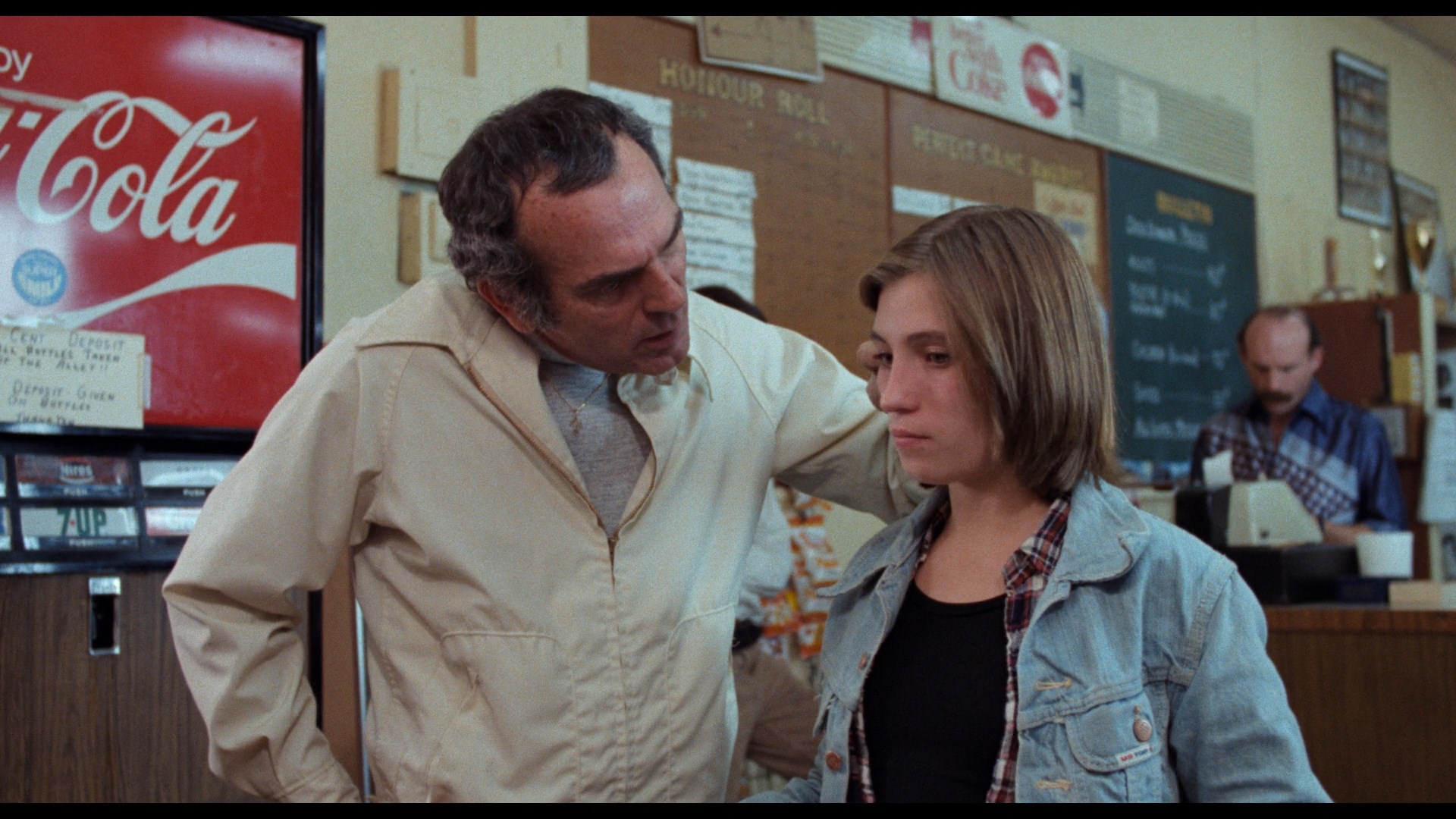 on fire with the cult favorite The Last Movie, Dennis Hopper returned to the director's chair by happenstance when a film he was hired to act in, originally called CeBe, had major production issues. After hearing the song "My My Hey Hey (Out of the Blue)" by his friend Neil Young, he decided to do a rewrite and helm the film himself retaining its star, Linda Manz, then hot off of Days of Heaven. What was originally a more traditional coming-of-age story turned into an intensely disturbing psychological horror film charting an adolescent's descent into nihilism in tandem with the punk craze raging at the time. Shot in Vancouver at the end of the '70s, the film was warmly received in Europe and (belatedly) in Canada but mostly went under the radar in the U.S. apart from those lucky enough to rent it on VHS when Media released it in 1988. Word of mouth also spread among the horror community that it was a secret ultra-traumatic gem on par with other secret shockers like The Fan, and its reputation got a bit of an additional boost in 2000 when Anchor Bay released it on U.S. DVD and VHS. Unfortunately the film went back into
on fire with the cult favorite The Last Movie, Dennis Hopper returned to the director's chair by happenstance when a film he was hired to act in, originally called CeBe, had major production issues. After hearing the song "My My Hey Hey (Out of the Blue)" by his friend Neil Young, he decided to do a rewrite and helm the film himself retaining its star, Linda Manz, then hot off of Days of Heaven. What was originally a more traditional coming-of-age story turned into an intensely disturbing psychological horror film charting an adolescent's descent into nihilism in tandem with the punk craze raging at the time. Shot in Vancouver at the end of the '70s, the film was warmly received in Europe and (belatedly) in Canada but mostly went under the radar in the U.S. apart from those lucky enough to rent it on VHS when Media released it in 1988. Word of mouth also spread among the horror community that it was a secret ultra-traumatic gem on par with other secret shockers like The Fan, and its reputation got a bit of an additional boost in 2000 when Anchor Bay released it on U.S. DVD and VHS. Unfortunately the film went back into 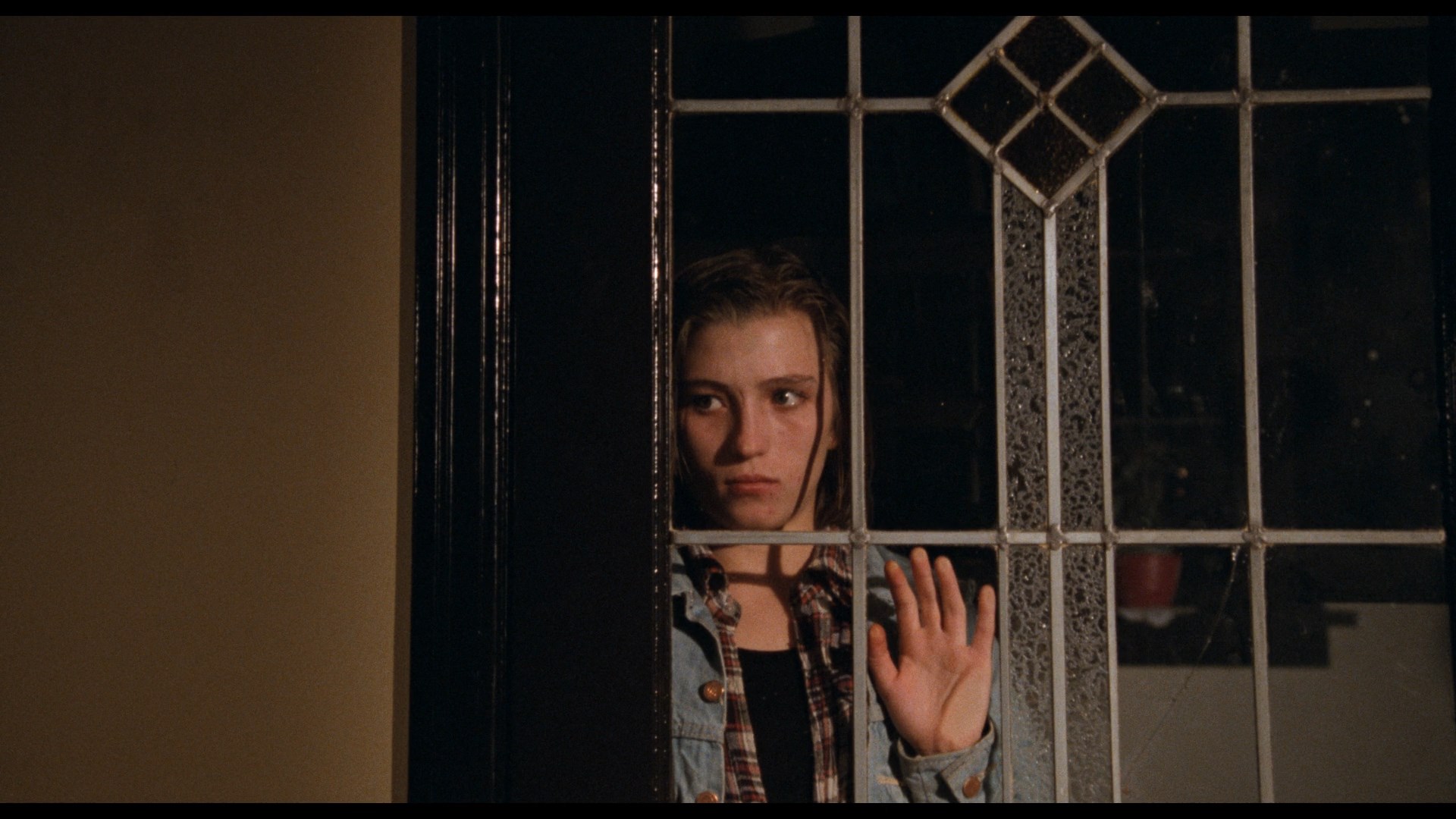 oblivion soon after for many, many years until a full-scale 4K restoration presented by Chloë Sevigny and Natasha Lyonne bowed in 2019, receiving its first physical media release on Blu-ray in the
oblivion soon after for many, many years until a full-scale 4K restoration presented by Chloë Sevigny and Natasha Lyonne bowed in 2019, receiving its first physical media release on Blu-ray in the 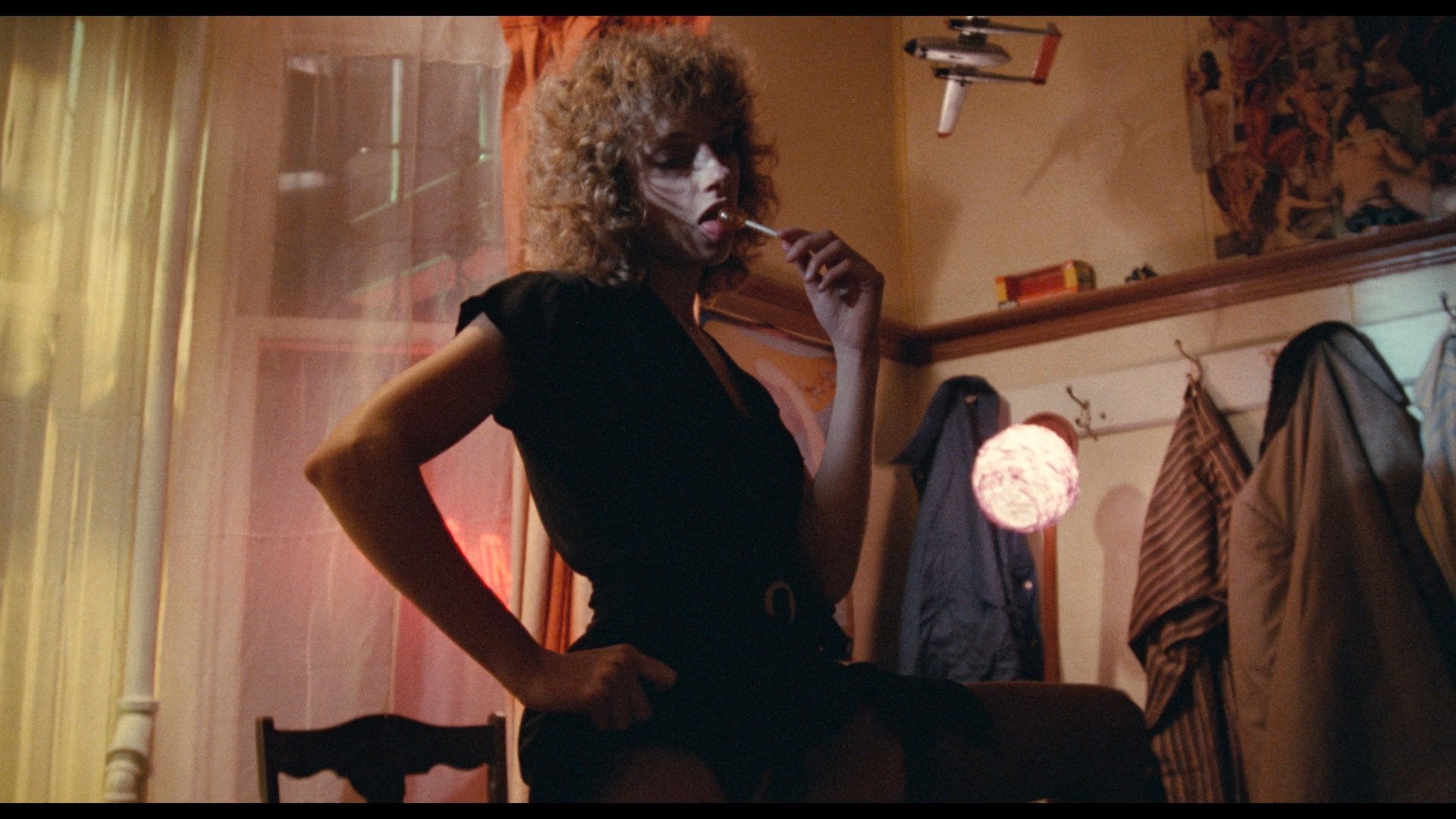 U.K. from the BFI in 2021.
U.K. from the BFI in 2021.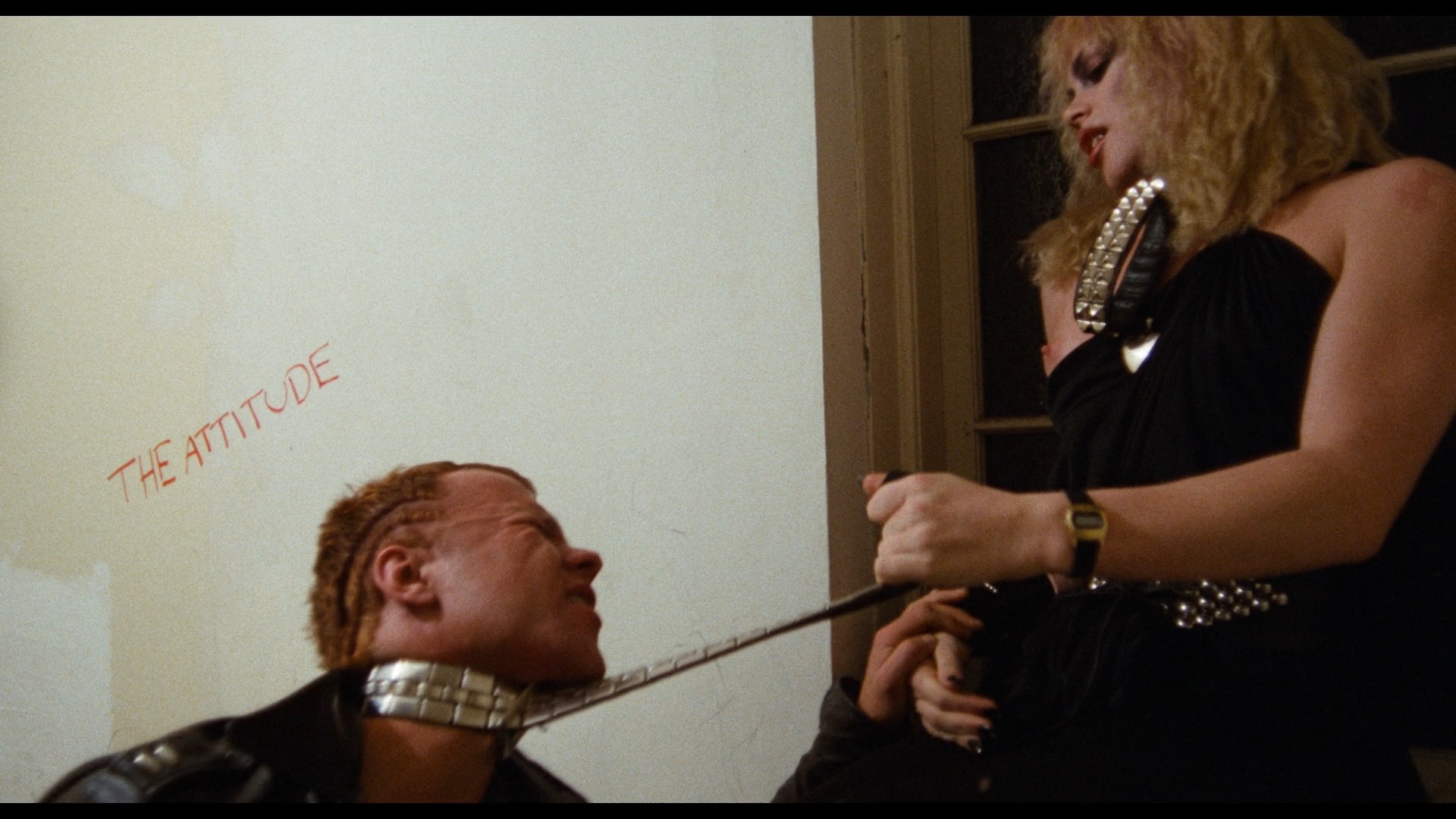 under your skin as well, changing meaning subtly each time you hear it all the way to th end credits. Stylistically the
under your skin as well, changing meaning subtly each time you hear it all the way to th end credits. Stylistically the 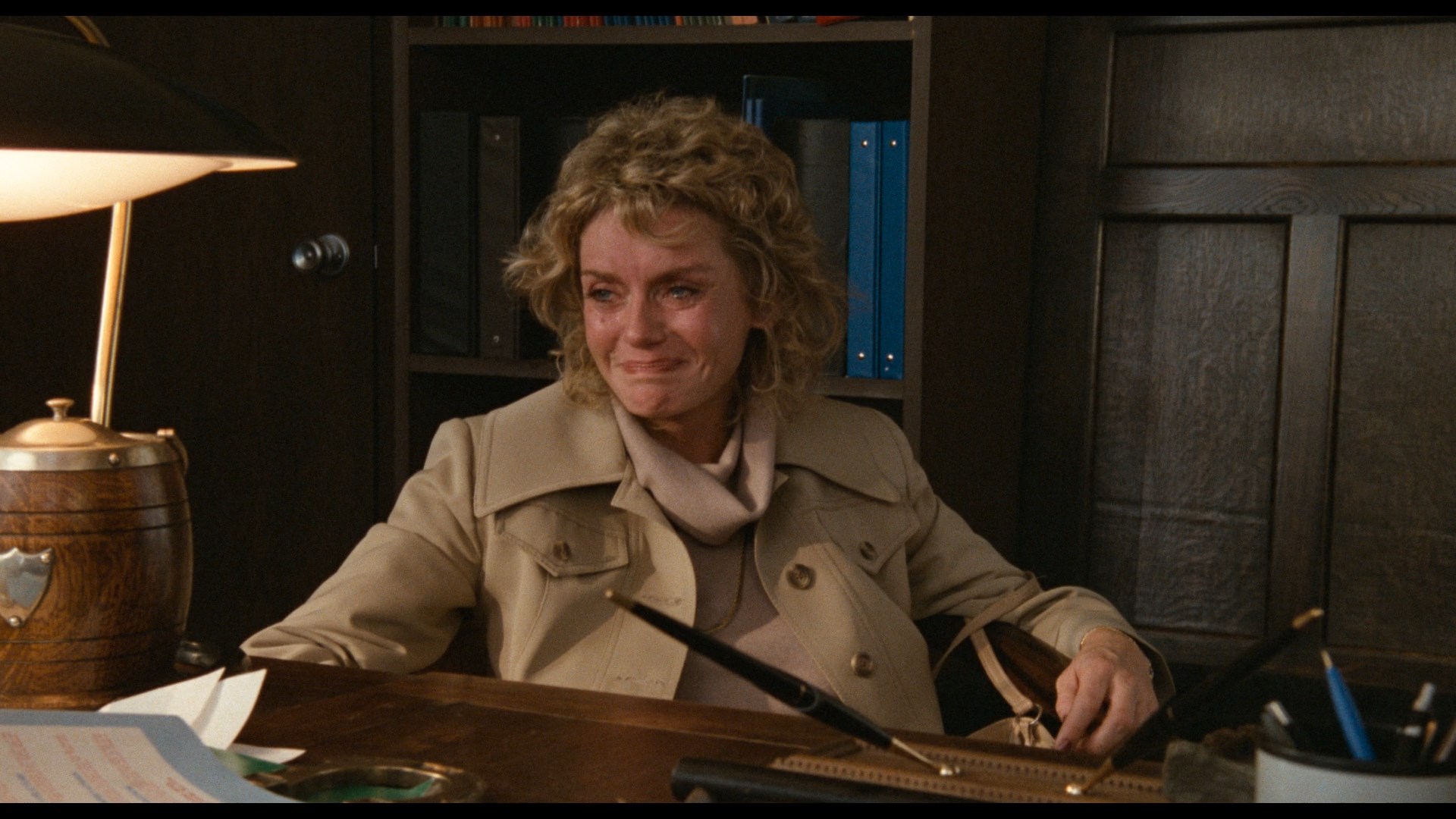 film is definitely more straightforward than Hopper's earlier work on Easy Rider and The Last Movie, essentially making this a bridge to his later crime films like Colors and The Hot Spot but still wholly unique among his body of work.
film is definitely more straightforward than Hopper's earlier work on Easy Rider and The Last Movie, essentially making this a bridge to his later crime films like Colors and The Hot Spot but still wholly unique among his body of work.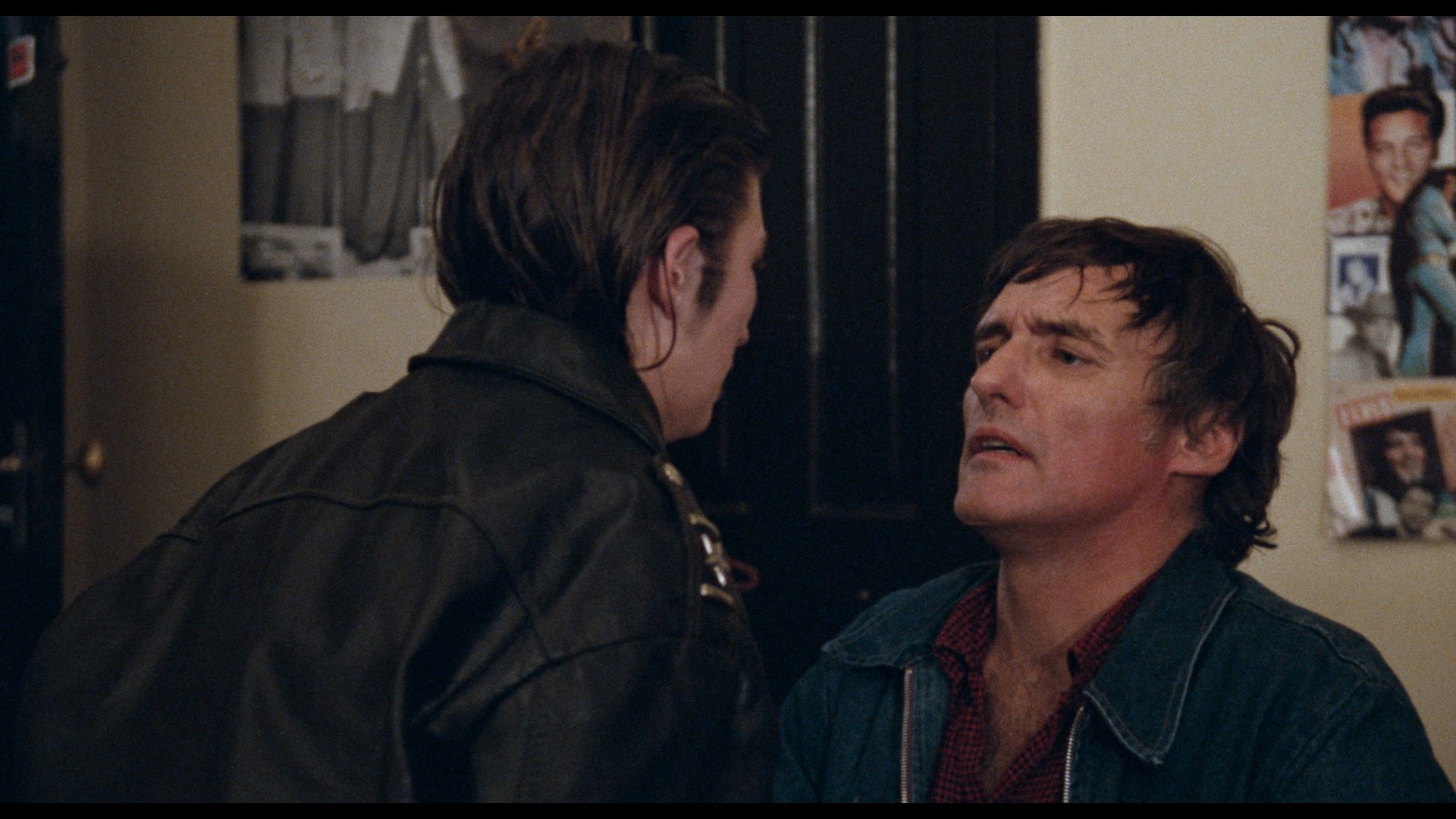 Kate
Kate 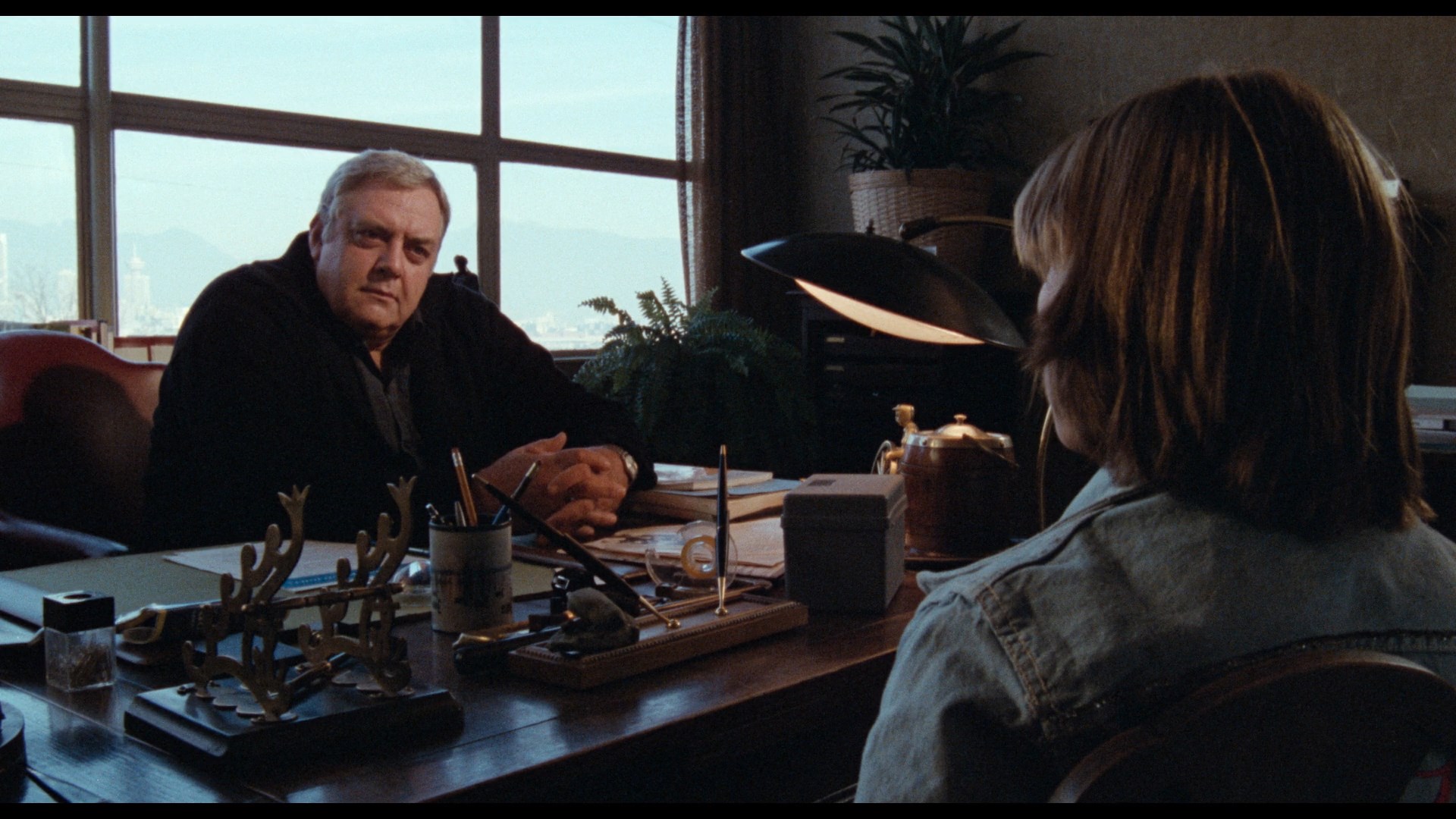 Rennebohm, who gives a thorough account of the film's production along with a reading of it as a commentary about the changing nature of family life moving out to the suburbs and becoming more fragmented (in a sense, a cousin to films like Over the Edge). The next commentary features Kat Ellinger offering her own take on the film, particularly from the punk angle as both a snapshot of the era and an epitaph as well as a reflection of what disaffected youths were going through at the time (including some bemused notes about her own experiences like getting tossed out of clubs for being underage). She also goes into Hopper's personal life before this point, which was turbulent to say the least. Speaking of which, you also get a 1984 video interview with Hopper by Tony Watts (96m52s) pretty much spanning his entire career to that point, with considerable discussion of his directing efforts and his impact on the counterculture. In the video essay Subverting Normality: Linda Manz Comes from Out of the Blue (17m53s), Amanda Reyes (who narrates) and Chris O’Neill offer a perceptive examination of the late actress' impactful performance and provide background about her life and affinity for punk that wound up being integrated into her character. Also included are a 1-minute radio spot with an endorsement by Jack Nicholson, a 4K digital reconstruction of the 1982 U.S. trailer, and a 40th anniversary trailer. However, in beloved BFI fashion you also get some fantastic thematically relevant archival shorts from their archives starting with 1963's COI B&W comic advisory Morecambe and Wise – Be Wise Don’t Drink and Drive (49s) and continuing with 1964's Drink Drive Office Party Cartoon (43s), Jane Campion's excellent 1983 B&W look at female adolescence in the '60s from the perspective of three students entitled A Girl’s Own Story (26m34s), and Carol Morley's 1993 short, Girl (6m52s), using fragmented disembodied shots and voiceover as a young girl chats about her relationship with her parents that takes a very grim turn at the end.
Rennebohm, who gives a thorough account of the film's production along with a reading of it as a commentary about the changing nature of family life moving out to the suburbs and becoming more fragmented (in a sense, a cousin to films like Over the Edge). The next commentary features Kat Ellinger offering her own take on the film, particularly from the punk angle as both a snapshot of the era and an epitaph as well as a reflection of what disaffected youths were going through at the time (including some bemused notes about her own experiences like getting tossed out of clubs for being underage). She also goes into Hopper's personal life before this point, which was turbulent to say the least. Speaking of which, you also get a 1984 video interview with Hopper by Tony Watts (96m52s) pretty much spanning his entire career to that point, with considerable discussion of his directing efforts and his impact on the counterculture. In the video essay Subverting Normality: Linda Manz Comes from Out of the Blue (17m53s), Amanda Reyes (who narrates) and Chris O’Neill offer a perceptive examination of the late actress' impactful performance and provide background about her life and affinity for punk that wound up being integrated into her character. Also included are a 1-minute radio spot with an endorsement by Jack Nicholson, a 4K digital reconstruction of the 1982 U.S. trailer, and a 40th anniversary trailer. However, in beloved BFI fashion you also get some fantastic thematically relevant archival shorts from their archives starting with 1963's COI B&W comic advisory Morecambe and Wise – Be Wise Don’t Drink and Drive (49s) and continuing with 1964's Drink Drive Office Party Cartoon (43s), Jane Campion's excellent 1983 B&W look at female adolescence in the '60s from the perspective of three students entitled A Girl’s Own Story (26m34s), and Carol Morley's 1993 short, Girl (6m52s), using fragmented disembodied shots and voiceover as a young girl chats about her relationship with her parents that takes a very grim turn at the end. 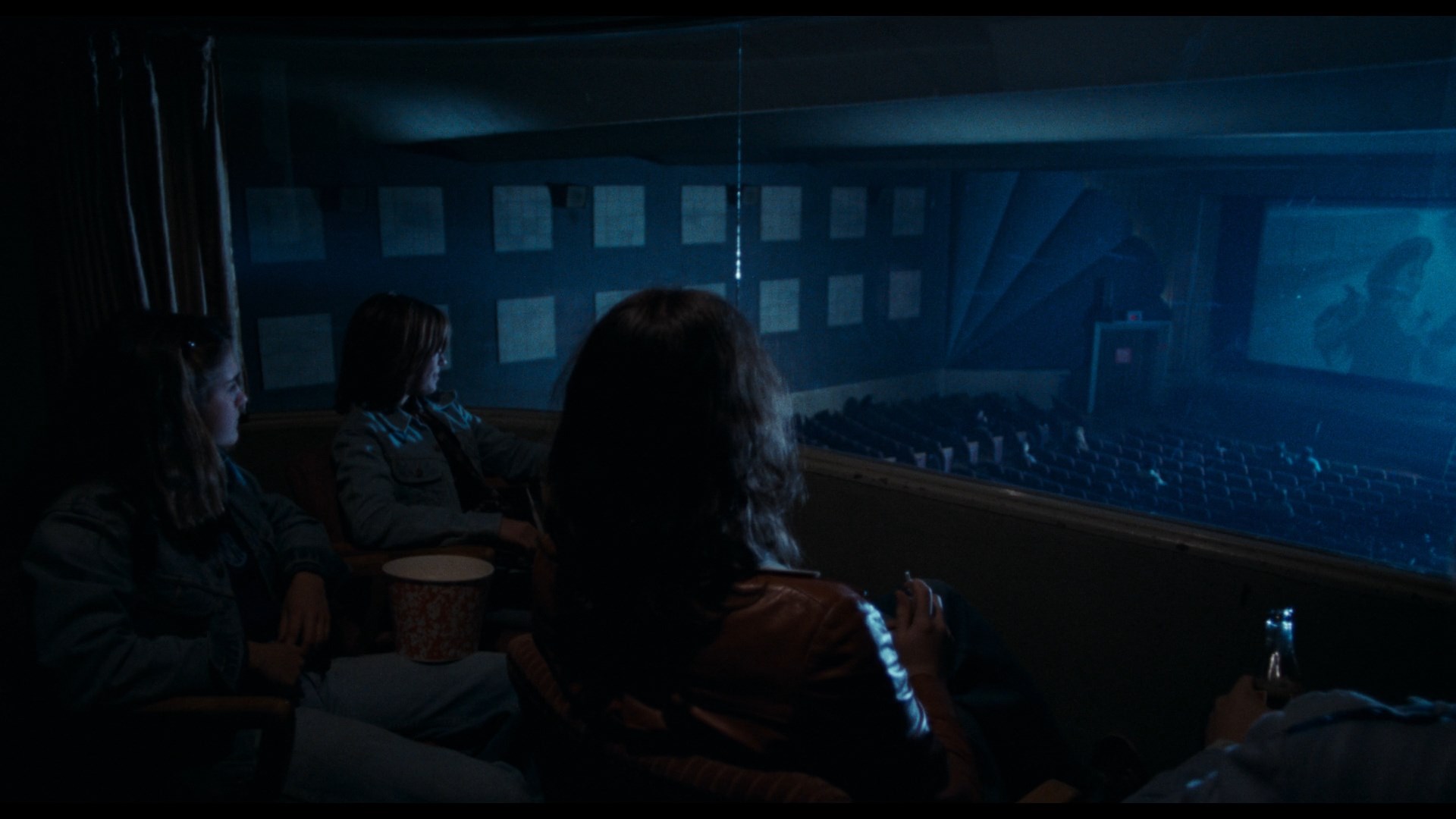 The second Blu-ray in the limited 4,000-unit edition features
The second Blu-ray in the limited 4,000-unit edition features 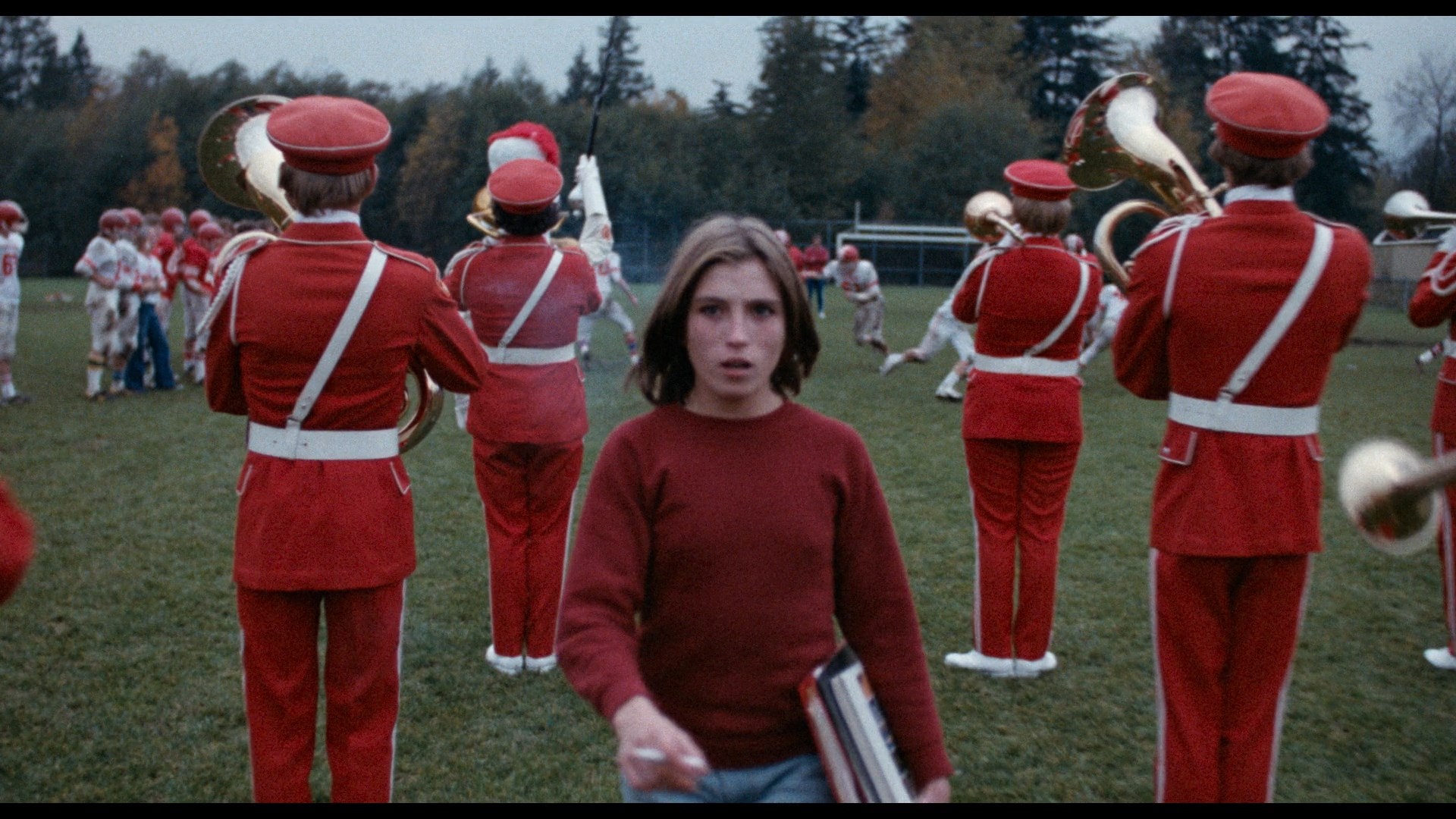 four additional extras staring with Remembering Out of the Blue (173m37s), a massive collection of new interviews with the surviving cast and crew all conducted via video conferencing with Farrell, script supervisor Christine Wilson, second assistant director Bob Akester, actor John Anderson and the Vancouver punk band members of Pointed Sticks (an amazing segment all on its own), composer Tom Lavin, camera operator John Holbrook, production coordinator Patti Allen, unit publicist and post-production assistant Julia Frittaion, film editor Doris Dyck. Each can be played separately as well, but all are worth watching with each offering a different perspective on the experience. Then Me & Dennis (80m12s) compiles new remote interviews with friends and colleagues Ethan Hawke, Richard Linklater, Julian Schnabel and Philippe Mora, who offer their takes on the film and on Hopper's impact as a director and artist in general (not to mention a very colorful personality). Then filmmaker Alex Cox gives his own take on the film (13m16s) explaining the impact it had on him and his own creative process, appropriately considering he did Sid & Nancy not long after. Finally a 2020 Montclair Film Festival Q&A (29m51s) features John Alan Simon (who conducts the interviews elsewhere on this disc) and Elizabeth Karr conversing with the festival's Tom Hall about the process of raising the money (including crowdfunding) and restoring the film to bring it to a new audience. The set also comes with an insert booklet featuring archival articles about the film, sample reviews, and a new essay by Vic Pratt.
four additional extras staring with Remembering Out of the Blue (173m37s), a massive collection of new interviews with the surviving cast and crew all conducted via video conferencing with Farrell, script supervisor Christine Wilson, second assistant director Bob Akester, actor John Anderson and the Vancouver punk band members of Pointed Sticks (an amazing segment all on its own), composer Tom Lavin, camera operator John Holbrook, production coordinator Patti Allen, unit publicist and post-production assistant Julia Frittaion, film editor Doris Dyck. Each can be played separately as well, but all are worth watching with each offering a different perspective on the experience. Then Me & Dennis (80m12s) compiles new remote interviews with friends and colleagues Ethan Hawke, Richard Linklater, Julian Schnabel and Philippe Mora, who offer their takes on the film and on Hopper's impact as a director and artist in general (not to mention a very colorful personality). Then filmmaker Alex Cox gives his own take on the film (13m16s) explaining the impact it had on him and his own creative process, appropriately considering he did Sid & Nancy not long after. Finally a 2020 Montclair Film Festival Q&A (29m51s) features John Alan Simon (who conducts the interviews elsewhere on this disc) and Elizabeth Karr conversing with the festival's Tom Hall about the process of raising the money (including crowdfunding) and restoring the film to bring it to a new audience. The set also comes with an insert booklet featuring archival articles about the film, sample reviews, and a new essay by Vic Pratt.![]()